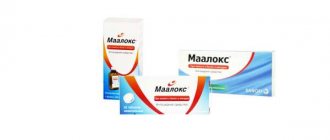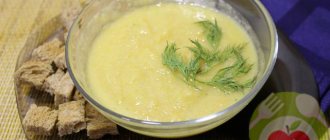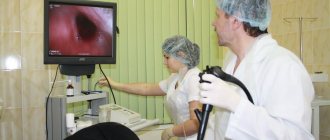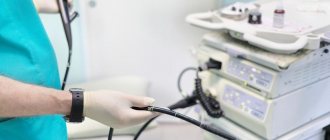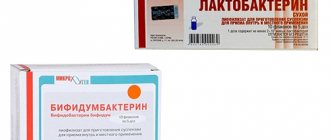Gastroduodenitis is an inflammation of the gastric mucosa that spreads to the mucous membranes of the duodenum. In this case, the duodenum suffers from a secondary process at the moment when inflammation passes to it from the gastric mucosa.
Gastroduodenitis belongs to the category of chronic gastritis due to secondary involvement of the duodenum. The risk group mostly includes children and young people, because by mature and middle age the peculiarity of the functioning of the valve between the stomach and duodenum disappears.
The main causes of gastroduodenitis lie in poor diet, stress and genetic predisposition. Side factors in the development of the disease are Helicobacter bacteria, smoking, chronic tonsillitis, caries, intestinal infections and diseases of the liver, pancreas or gall bladder.
In the presence of an underlying disease, gastroduodenitis has the nature of a secondary disease. If the development of pathology occurs on its own, it is primary.
Symptoms and signs
The primary signs of gastroduodenitis are pain. Acute gastroduodenitis is manifested by the following symptoms:
- feeling of heaviness;
- acute pain in the navel and pit of the stomach;
- nausea and vomiting;
- belching of air or sour liquid contents;
- dizziness;
- severe heartburn.
Symptoms of gastroduodenitis appear over a short period of time, but are very pronounced. In this case, the secondary form often has signs of the underlying disease to a greater extent.
The acute form of the pathology has a cyclical nature of the appearance of symptoms. The severity of the symptoms depends on:
- depth and area of inflammation;
- acidity level;
- general condition of the body.
Chronic gastroduodenitis has the following symptoms:
- overcrowding and heaviness in the epigastric region;
- aching pain on a constant basis before eating and a couple of hours after;
- heartburn before eating;
- pain is accompanied by nausea;
- mild pain during palpation;
- white coating on the tongue, bitterness or metallic taste in the mouth;
- irritability, fatigue, insomnia, weight loss with the same level of appetite;
- constipation with high acidity levels;
- frequent changes in constipation and diarrhea with reduced secretion.
During exacerbations, these symptoms become pronounced. Intense pain is often accompanied by nausea and vomiting, heartburn.
Do you have symptoms of gastroduodenitis?
Only a doctor can accurately diagnose the disease. Don't delay your consultation - call
Causes of the disease
Gastroduodenitis can appear in a child even in early childhood. This is due to the weakness of the body.
In the first years of life, the intestines are susceptible to infections that lead to disruption of absorption and digestion processes.
The gastric glands do not function at full capacity and are capable of digesting not all foods. It is enough to regularly break the diet to provoke chronic gastritis in children.
An acute attack is most often provoked by poor nutrition.
The danger comes from foods that irritate or damage the gastric mucosa: fatty, spicy, “quick” snacks, nuts or crackers with a lot of salt or seasonings.
The clinical picture may be worsened by strong emotional experiences.
Also, chronic gastroduodenitis in children can be provoked by the following factors:
- persistent changes in the mucous membranes;
- intestinal infections;
- heredity;
- low or high acidity;
- long-term use of antibiotics;
- chronic pathologies of the digestive system;
- endocrine system problems;
- chronic focal infections.
In adolescents, hormonal disorders are often a provocateur.
Causes of occurrence and development
All causes of gastroduodenitis can be divided into several groups:
- endogenous or internal - lack of mucus production, high acid production, disturbances in hormonal secretion, genetic predisposition, chronic diseases of the oral cavity and pharynx, for example, caries or inflammation of the tonsils, as well as the liver and biliary tract;
- exogenous or external - irregular diet, alcohol abuse, psychological factors, for example, stress and overload, abuse of hot or cold, fatty and spicy, rough foods, prolonged use of non-steroidal anti-inflammatory or antibacterial drugs, infection with the bacterium Helicobacter pylori.
In practice, the disease develops and progresses under the influence of several factors simultaneously.
Causes of gastritis and gastroduodenitis
To successfully treat any disease, it is necessary to know the causes of its occurrence. Let's look at what causes gastritis and gastroduodenitis:
- non-compliance with diet;
- excessive dieting or overeating;
- tendency to foods and drinks that irritate the mucous membranes (spicy, hot, fried, strong coffee, alcohol, etc.);
- bad habits (smoking, etc.);
- excessive amount of stress;
- decreased immunity;
- toxic poisoning;
- heredity;
- pathogenic bacteria.
https://www.youtube.com/watch?v=_mK79mDc7Q4
In addition, these diseases can provoke each other. In the presence of reflux during gastroduodenitis, its contents are expelled from the duodenum, which irritates the mucous membrane and causes gastritis C or chemical-toxic gastritis. And gastroduodenitis itself can occur as a complication of gastritis, when the inflammatory process gradually spreads to the duodenal mucosa.
Classification
There are a number of signs for identifying types of gastroduodenitis - the severity of the inflammatory process and the level of acidity.
Depending on the severity of inflammation, it can be:
- superficial gastroduodenitis - an acute form with swelling and thickening of the folds of the membrane;
- hypertrophic gastroduodenitis - redness and white plaque, as well as hemorrhages with small dots;
- mixed gastroduodenitis - a hypertrophic form with the addition of atrophy of the mucous membranes;
- erosive gastroduodenitis - a large number of erosive spots or ulcers on the surface in the form of a film or plaque, is the last stage before the ulcer.
Based on acidity level, they are divided into:
- increased acidity is accompanied by increased gastric secretion - the most common;
- normal secretion;
- decreased secretion accompanies malignant neoplasms of the stomach.
There are a number of atypical forms of gastroduodenitis, which are characterized by the absence of symptoms.
Complications of inflammatory processes
The difference between the diseases is that the inflammatory process with gastritis develops only on the gastric mucosa, while with gastroduodenitis it occurs on the mucous membrane of the stomach and duodenum. But these two different pathologies can cause the same complications.
- Ulcers in the stomach, duodenum.
- Internal bleeding.
- Peritonitis, blood poisoning.
- Cancer.
- Inflammation of the pancreas.
- Dehydration (due to prolonged vomiting).
- Exhaustion of the body, anorexia.
The consequences of both pathologies are quite serious. Some of them can cause death. It is for this reason that at the first symptoms it is necessary to immediately undergo an examination.
An accurate diagnosis is made on the basis of laboratory tests and fibrogastroscopy. A gastroscope (a flexible tube equipped with a fiber-optic system) is inserted into the cavity of the stomach and duodenum. The image is displayed on the monitor. The doctor will be able to accurately determine whether the inflammation is only in the stomach or whether the duodenum area has already been affected. Based on the results of the study, treatment is prescribed.
Complications
The most important negative consequence is the transition of gastroduodenitis to gastric and duodenal ulcers. As a result of these diseases, the risk of bleeding and gastric perforation increases. In addition, damaged mucous membrane becomes a favorable environment for the development of stomach cancer.
When to see a doctor
If you suspect the development of gastroduodenitis or the appearance of primary symptoms, you should contact a gastroenterologist for help. After all, an advanced form of pathology brings enormous discomfort and limits the activity of normal life. At the same time, the risk of bleeding or perforation increases along with delaying a visit to the doctor.
JSC “Medicine” (academician Roitberg’s clinic) employs specialists in various fields, has the most modern equipment and conducts various types of examinations. You can make an appointment and choose a doctor on the website, by phone or from the administrators at the clinic: Moscow, 2nd Tverskoy-Yamskoy Lane, 10.
Gastritis and gastroduodenitis
Gastritis, duodenitis and gastroduodenitis are diseases of the gastrointestinal tract and digestive system as a whole, caused by dystrophic changes and inflammatory processes caused by various pathologies and causes.
Gastritis is a disease of the stomach that affects its mucous membrane, as a result of which the main secretory functions of the organ are disrupted.
Duodenitis is a disease of the duodenum, in which inflammatory changes are localized on its mucous membranes. As a rule, duodenitis in its “pure” form is less common than gastroduodenitis, since it is accompanied by stomach problems, so we will not consider it in detail separately.
Gastroduodenitis is a disease localized in the pyloric zone of the stomach and duodenum, characterized by degenerative processes and inflammation of the mucous membrane; it is often called mixed gastritis.
Now we can draw a conclusion about the similarities and differences between these diseases.
Similarities:
- all diseases affect the organs of the gastrointestinal tract and disrupt their functioning;
- characterized by damage to the mucous membrane, are inflammatory and dystrophic in nature
- have similar causes.
Differences:
- only in the localization of damage to mucosal tissue; gastritis - a disease of the stomach, gastroduodenitis - the stomach and duodenum;
- Of course, the severity of certain symptoms also differs in different patients.
As can be seen from the above facts, gastritis and gastroduodenitis are similar, so they are combined into a common group of diseases and treated according to general principles. And now a little more about these diseases.
Gastritis
The following types are distinguished:
- spicy;
- chronic.
Acute are divided into:
- catarrhal;
- fibrinous;
- corrosive;
- phlegmous.
Chronic are divided into:
- autoimmune (type A);
- bacterial (type B);
- reflux (type C);
- eosinophilic;
- lymphocytic;
- erosive;
- radiation;
- superficial.
Duodenitis
Duodenitis, similar to gastritis, is divided into acute and chronic. They are also:
- catarrhal;
- erosive-ulcerative;
- phlegmous;
- limited;
- widespread.
Gastroduodenitis
Since this disease is a form of gastritis, the types and symptoms are very similar. Gastroduodenitis can also be acute and chronic. In the second type, the secretory and motor functions of the affected area are disrupted, as a result of which the gastric mucosa is completely changed.
Types of gastroduodenitis according to various characteristics:
- primary;
- secondary;
- common;
- localized;
- reflux;
- with normal acidity;
- with high acidity;
- with low acidity.
https://www.youtube.com/watch?v=3ezdBlFt16A
Diagnostics
Diagnosis of gastroduodenitis can take place in two directions:
- endoscopy – determines the degree of damage and the condition of the mucous membranes;
- histology - determines the relevance of inflammation of the mucous membranes, shows the presence of atrophy and the degree of its development.
The following additional survey measures are used:
- fluoroscopy;
- pH-metry using a special probe;
- Ultrasound gives a general idea.
During the diagnostic process, it is extremely important to determine the type and form of the disease, which are the determining factor in choosing a treatment method.
Diagnosis of pathology
When the first problems with the stomach appear, you need to contact pediatrics; the final diagnosis is carried out in gastroenterology.
During a visual examination of a young patient, a specialist is alarmed by external signs of the disease - thinness inappropriate for age, loss of skin elasticity, pallor and bruises under the eyes.
It is impossible to make an accurate diagnosis from one examination. To clarify the forms of gastroduodenitis in children, the following are additionally prescribed:
- general blood analysis;
- stool analysis;
- coprogram;
- fibrogastroduodenoscopy;
- endoscopic biopsy;
- probing;
- measuring the pH level of gastric juice.
During tests, anemia or helminth eggs are often detected. Both pathologies may have the same symptoms as typical manifestations of gastroduodenitis.
Treatment
Treatment of gastroduodenitis is complex, consisting of drug therapy and diet therapy. With the development of concomitant pathologies or exacerbation of the disease, radical treatment methods are sometimes required.
If there is a bacterial component to the pathology, the use of antibiotics is necessary. In a general sense, drug treatment consists of the following groups of drugs:
- painkillers;
- enzymes;
- sedatives;
- antacids;
- stimulators of reparative processes.
Diet therapy involves the use of several developed techniques:
- increased and normal secretion - diet No. 1;
- decreased secretion – diet No. 2;
- during the period of remission - diet No. 15;
- the presence of constipation in remission - diet No. 3;
- the presence of diarrhea in remission - diet No. 4.
Diet therapy
Diets No. 1, 2 and 15 have a number of general rules:
- the temperature regime of food and drink is at the average level - excluding hot and cold;
- exclude spices of spicy, pungent or other strong taste;
- food should be finely chopped and the consistency of the dish should be soft;
- small and frequent meals - a serving of no more than two handfuls 5-6 times a day;
- meals equally distant from each other - no more than 2-3 hours between meals;
- last meal 2 hours before bedtime.
Drug treatment
If there is a positive reaction in the test results to the bacterium Helicobacter pylori, the use of antibiotics is necessary, but if the reaction is negative, such drugs are not required.
The course of drug therapy includes drugs to increase acidity in gastroduodenitis, relieve pain, reduce acidity instead of antisecretory drugs, and normalize the functioning of the esophagus.
Folk recipes
Additional treatment at home can be obtained through the use of traditional medicine recipes. Before you start using it, you should consult your doctor. Among the popular recipes are the following: an infusion of flax seeds, a decoction of oats for healing, a decoction of fresh mint instead of regular tea, nettle boiled in milk with the addition of honey, an infusion of calendula, a mixture of chamomile leaves, St. John's wort, nettle and plantain.
Prevention
Prevention of gastroduodenitis has two directions - preventing exacerbations of chronic gastroduodenitis and preventing the development of pathology. The set of preventive measures includes:
- healthy lifestyle;
- eliminating bad habits;
- moderate physical activity;
- alcohol restriction;
- maintaining a daily routine - sleep, rest and work;
- taking vitamins;
- strengthening the immune system;
- timely treatment of infectious diseases of the gastrointestinal tract.




